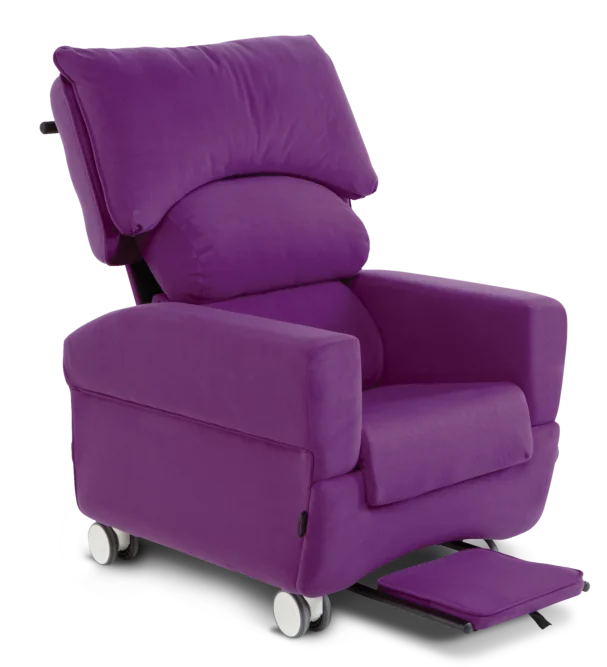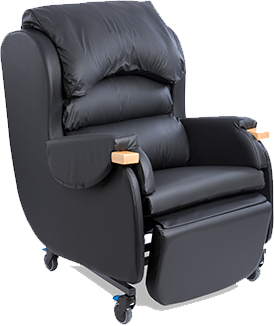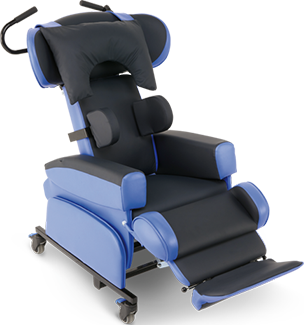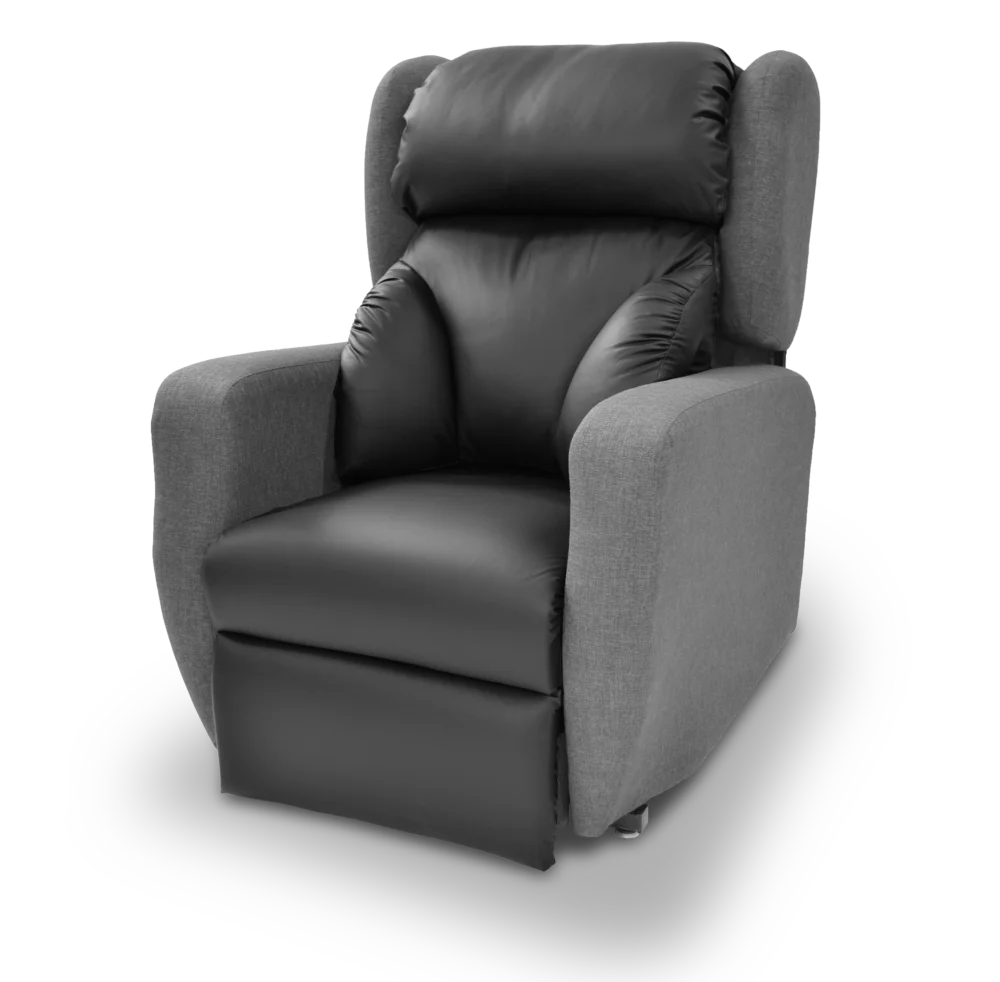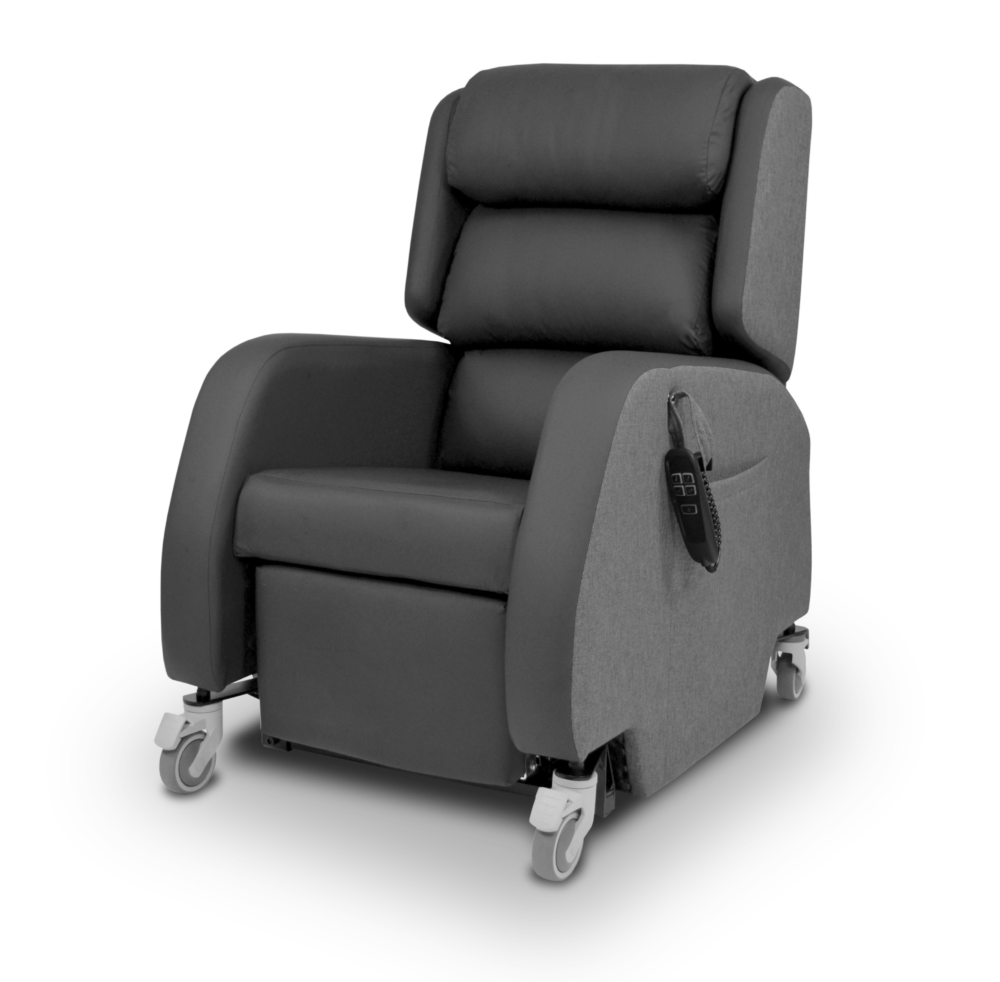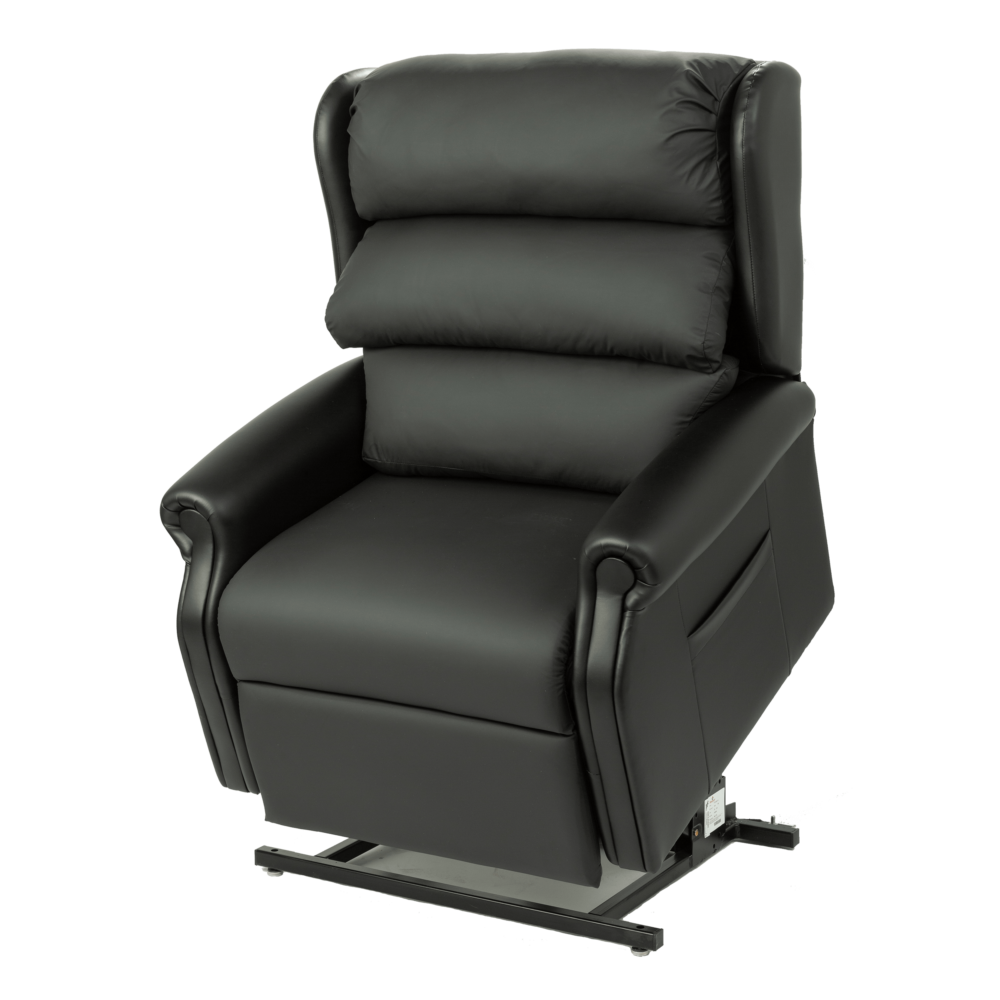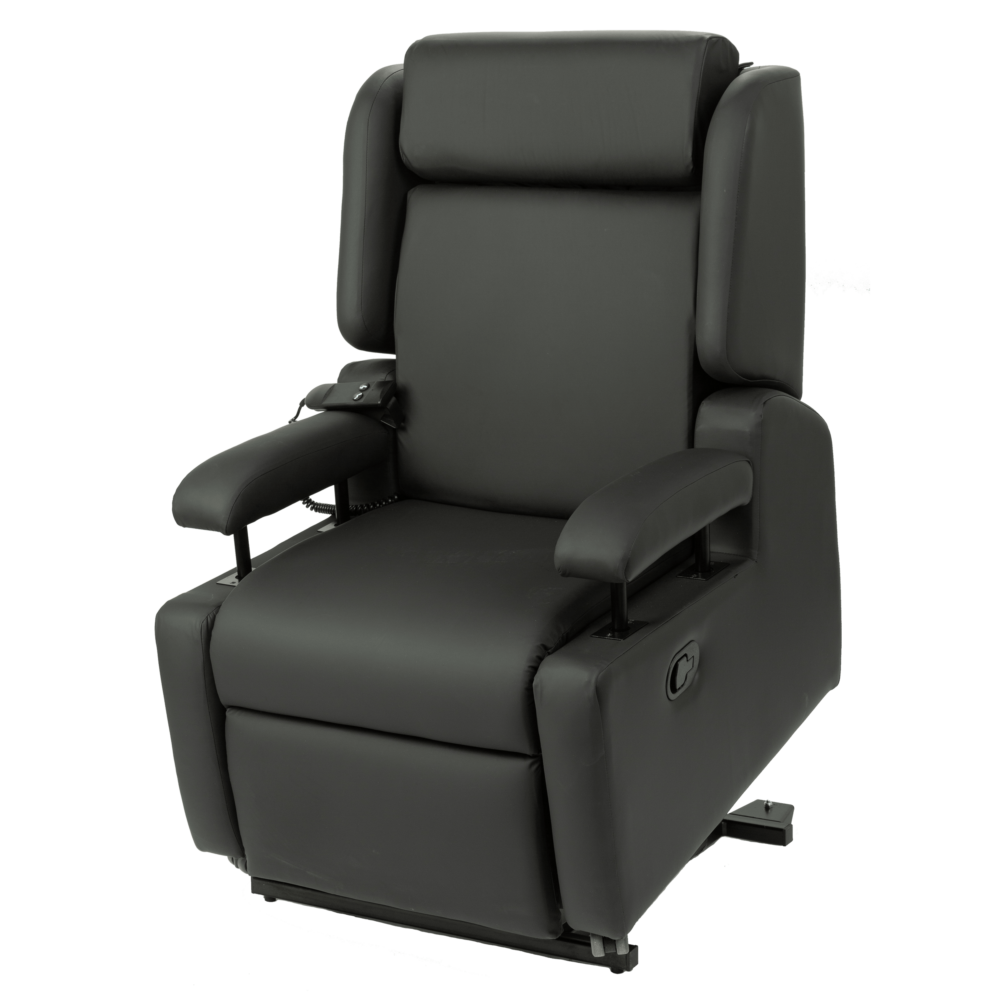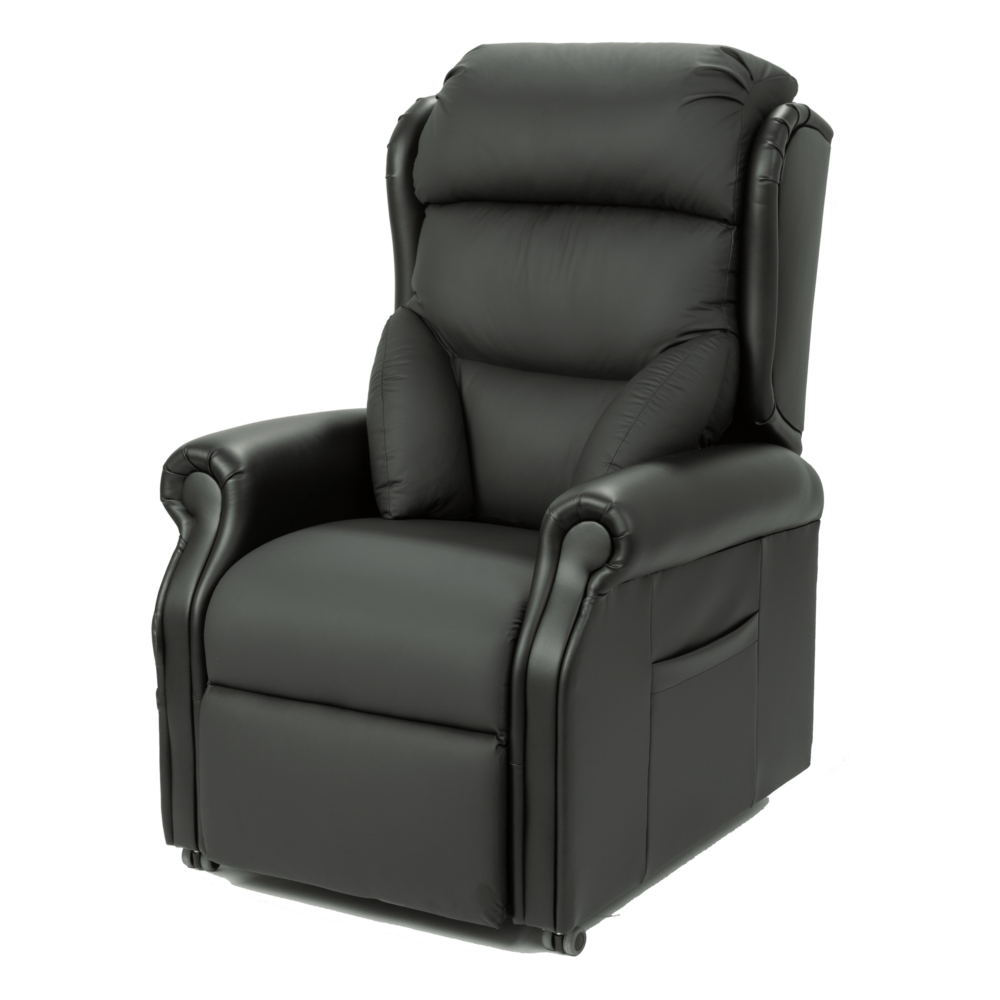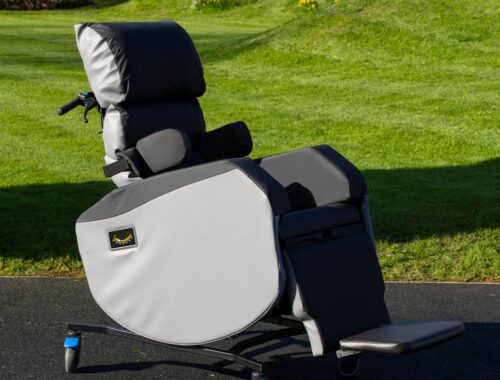CareFlex Positioning Aids – Belts & Harnesses
CareFlex belts and harnesses are designed to be used with CareFlex specialist seating as positioning aids following a comprehensive assessment of posture, risk, and capacity to consent; careful and thorough consideration is always required. Appropriate levels of competence and confidence is essential for all those who provide, prescribe, and maintain belts and harnesses, in their function, adjustment, and operation. A level of supervision suitable to the user’s abilities must also be always applied, with regular monitoring and reviews.
What are belts and harnesses, and why are they used?
The use of belts and harnesses in specialist seating, at times misinterpreted as restraint, is an understandably sensitive topic. However, when used correctly, belts and harnesses can be implemented as positioning aids that are critical to an individual’s specialist seating prescription and ultimately their quality of life.
Positioning aids can help individuals maintain a stable sitting posture, promote comfort and safety, and enhance physiological function. They can also help reduce the risk of pressure injury through the effects of shear and friction forces.
Nevertheless, belts and harnesses should never be used as a substitute for appropriate care and support. All other options to keep individuals safe and in the optimum sitting position should be attempted initially, such as ensuring correct seat dimensions, considering the critical angles, managing fatigue, providing a tilt-in-space function, prescribing exercises programmes, creating safe environments, and using alerting systems. If the implementation of positioning aids is justified, then the least restrictive option should always be considered first.
When might belts and harnesses be indicated?
- For an individual with pelvic instability – they may present with sacral sitting, rotation, or obliquity, which will significantly impact on the body segments above and below their pelvis. They may also be at risk of injury from sliding down or out of the chair.
- For an individual with abnormal muscle tone, often observed in individuals with cerebral palsy – the resulting postural instability can indicate the need for external anterior stabilisation1 to promote comfort and freedom of movement.
- For an individual with involuntary movements, and an inability to reposition themselves, as can be observed with Huntington’s disease chorea – promoting support and stability can help manage abnormal movement patterns and encourage comfort and safety2.
- For an individual who presents with leaning at the trunk or an increased thoracic kyphosis – prolonged sitting in these destructive postures can increase the risk of secondary complications, such as deformities and impaired physiological function3.
- For an individual with an increased risk of falls4, and who also may have impaired cognitive function – unaccompanied transfers and mobilising could lead to a fall and serious injury or wandering to a hazardous environment.
This list is not exhaustive; each assessment and prescription for specialist seating should be considered on an individual case-by-case basis. Other risk factors include behaviours that challenge, self-injurious actions, or being physically abusive towards others. In these instances, restraint for safety purposes may be indicated; structured and detailed multi-disciplinary discussions around risk and capacity to consent will be critical.
How can belts and harnesses be implemented safely?
There is a risk of serious injury or death if a positioning aid is used improperly or in ways other than intended4.
The Medicines and Healthcare products Regulatory Agency (MHRA) advises the following action plan5 for everyone involved in the provision, prescription, use and maintenance of the posture or safety aids:
- Ensure that all posture/safety belts are fitted, adjusted, used, cleaned, checked, and maintained in accordance with the manufacturer’s instructions.
- Ensure all users and carers are aware of the manufacturer’s instructions for use and have received training on how to check, adjust, clean, and maintain each device.
- Before each use, ensure that the posture/safety belt is in a satisfactory condition, is the right type for the user, and is adjusted correctly.
- Ensure that each review of an individual’s needs includes a check that the posture/safety belt is the right one for the user and carers.
- Report all adverse events associated with the use of these devices to the manufacturer and MHRA.
All belts and harnesses need to be correctly fitted and adjusted to adequately support and stabilise the individual’s posture without restricting physiological function or causing discomfort:
- It is essential that a pelvic belt is not fitted loosely around the user, and is not allowed to work loose over time, as this will allow the pelvis to become unstable and could increase shear and friction forces.
- Groin harnesses must be positioned flat without any twisting of straps to ensure optimum pressure care and fitted securely to stabilise the pelvis.
- Chest harnesses need to be positioned around the upper trunk to act against the ribcage, whilst ensuring that they clear any in situ medical devices and used in combination with pelvic belts.
Every time a CareFlex belt or harness is used, it should be checked for signs of damage or excessive wear, including cracked buckles, loose seams, or frayed stitching. If the belt or harness shows signs of damage, take it out of service immediately and assess whether it is safe to continue using the chair. If the belt or harness should start behaving outside of its intended performance, or otherwise feels unsuitable, please contact CareFlex or CareFlex Distributor immediately.
What belts and harnesses are available?
Pelvic belts
- The most common and simplest prescribed intervention for anterior pelvic stabilisation is the pelvic belt1.
- Appropriate selection and use will impact on the success of the whole seating system6.
- CareFlex’s simple pelvic belt is made from 50mm webbing with a double adjustable buckle. It is ideally used as a safety belt when portering an individual in a chair.
- The padded 2-point pelvic belt has soft, sub-ASIS (anterior superior iliac spine) pads to reduce pressure on the front of the pelvis. It is ‘rear pull’, so that day-to-day adjustments are easily made by pulling D-rings at the ends of the pads to adjust the tension on the belt.
- The padded 4-point pelvic belt has a centre pull adjustment and comfort pads to reduce pressure on the front of the pelvis, with secondary straps that pull down over the thighs at right angles to the seat base to maximise pelvic stability.
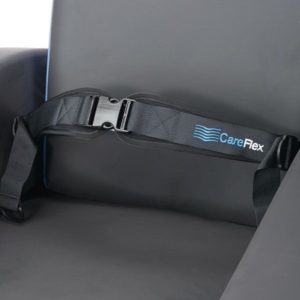
Groin harnesses
- A groin harness is a positioning aid that provides maximum pelvic control.
- It aims to prevent the user from sliding forward in the seat and any subsequent fall or injury.
- The harness will help stabilise the position of the pelvis without putting pressure on the abdominal area.
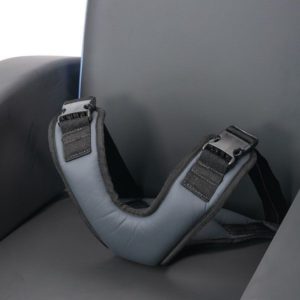
Chest and sternum harnesses
- Anterior trunk supports encourage an upright posture for improved physiological function, head positioning, and upper extremity control.
- CareFlex’s dynamic chest harness is made from neoprene, allowing the harness to stretch in response to movement. This provides anterior support and comfort whilst not restricting active positioning and function. The lower straps have multi-direction buckles that swivel to avoid twisting and provide comfort.
- The dynamic sternum harness has the same features as the chest harness but has a more incised profile for greater comfort across the chest.
- CareFlex chest and sternum harnesses are designed to be used in conjunction with a pelvic belt.
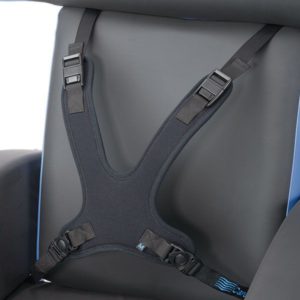
When might the use of belts and harnesses be inappropriate or contra-indicated?
As aforementioned, the provision of any positioning aid must be cautiously considered. There are specific circumstances, when belts and harnesses may be inappropriate or contra-indicated, to be aware of:
- If an individual is deemed to have capacity to refuse a belt or harness, then this decision should be respected, and alternatives discussed.
- Some individuals, especially those with extreme involuntary movements or those who display behaviours that challenge, may be more at risk of injury with the positioning aids in situ as they struggle against a belt or harness, or become distressed.
- Ambulant or active individuals could have their independence limited if restrained within the chair inappropriately, and subsequently their risk of immobility and poor health could be increased.
Individuals who present with skin integrity concerns will need regular monitoring and reviews; belts or harnesses, especially when used inappropriately, could increase their risk of pressure injury. However, as already discussed, in other cases positioning aids could reduce the risk of pressure injury when used within the seating system as part of a 24-hour postural and pressure management care plan.
Summary
Positioning aids, such as belts and harnesses, when used appropriately can encourage postural stability, promote safety, enhance physiological function, and reduce the risk of pressure injury.
The prescription of belts and harnesses as part of a specialist seating system should be carefully considered with a thorough assessment of posture, risk, and capacity to consent; deprivation of liberty safeguards should be addressed, and justifications need to be clearly documented if acting in an individual’s best interest.
Any individual providing, prescribing, or maintaining positioning aids must be confident and competent in their function, adjustment, and operation. Users of belts and harnesses should also be monitored and reviewed regularly to ensure continued safe and appropriate implementation.
For more information, please get in touch.
References:
- Lacoste M, Therrien M, Prince F (2009) Stability of children with cerebral palsy in their wheelchair seating: perceptions of parents and therapists Disability and Rehabilitation: Assistive Technology 4(3):143-150
- European Huntington’s Disease Network (2012) Occupational Therapy for People with Huntington’s Disease: Best Practice Guidelines Available from: hda.org.uk
- Healy A, Ramsey C, Sexsmith E (1997) Postural support systems: their fabrication and functional use Developmental Medicine and Children Neurology 39:706-710
- Chaves E, Cooper R, Collins D, Karmarkar A, Cooper R (2007) Review of the Use of Physical Restraints and Lap Belts with Wheelchair Users Assistive Technology 19(2):94-107
- Medicines and Healthcare products Regulatory Agency (2015) Medical Device Alert MDA/2015/0018 Available from: www.gov.uk/drug-device-alerts/all-posture-or-safety-belts-fitted-to-supportive-seating-wheelchairs-hoists-and-bathroom-equipment-risk-of-serious-injury-or-death
- Bergen A (1989) A Seat Belt Is a Seat Belt Is a… Assistive Technology 1(1):7-9

